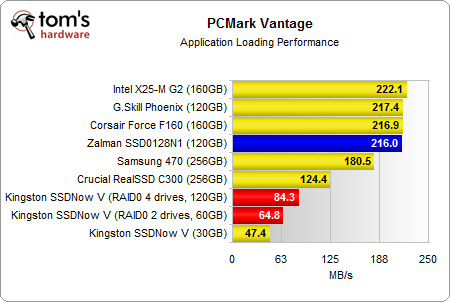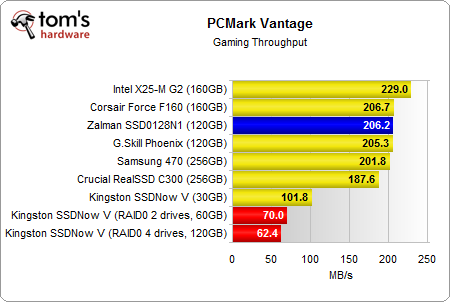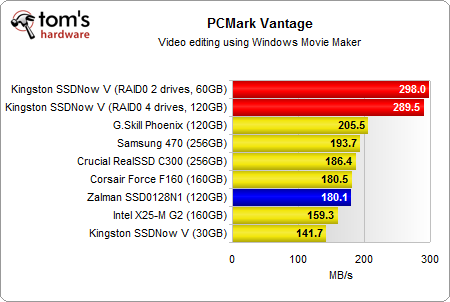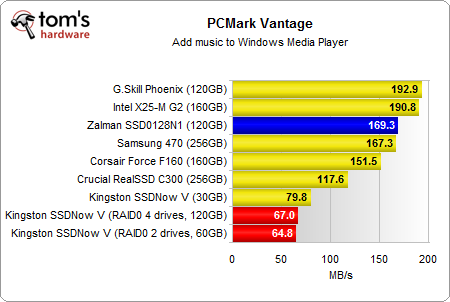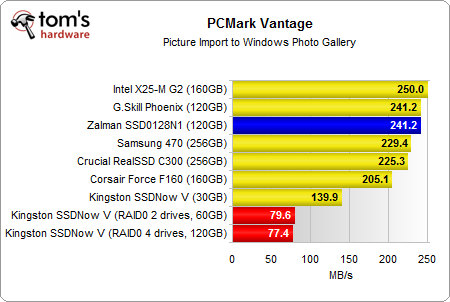SSD RAID: Do You Want A Cheap Array Or One Larger Drive?
You're on a budget. You want to know if it'd be better to stripe a couple of smaller SSDs or simply buy one larger performance-oriented drive. Today we're comparing one, two, and four 30 GB Kingston SSDNow V drives to Zalman’s new 128 GB N-series SSD.
Benchmark Results: PCMark Vantage Storage Test
Although the RAID setups provide impressive throughput performance, they don’t accelerate application load performance very much. The Intel and SandForce SSDs all deliver 200+ MB/s, while the four-drive RAID array stays at 84 MB/s.
Something similar happens to gaming: throughput performance is only one part of the performance story and other, more powerful SSDs easily outperform the RAID arrays made of cheap SSDs.
For the video editing test, the results are a bit different, as this one requires lots of bandwidth. Two cheap 30 GB SSDs are sufficient to outrun all the other SSDs.
Windows Defender is I/O dependent, and hence performs best on the upper-class SSD products.
Windows Media Center requires streaming horsepower, which is why the RAID setups shine.
We would have expected the Windows Vista startup process to benefit from the substantial throughput of the Kingston SSDNow V 30 GB RAID arrays, but the benchmark reflects what we also found in real life testing: the fastest individual SSDs deliver better overall startup performance and Windows takes less time to boot. Keep in mind that the difference is only seconds on a fast machine.
Overall, the RAID arrays are a good approach to maximize SSD performance, but the money is probably better spent in a single, more powerful solid state drive like Zalman’s new N-series.
Get Tom's Hardware's best news and in-depth reviews, straight to your inbox.
Current page: Benchmark Results: PCMark Vantage Storage Test
Prev Page Benchmark Results: 512 KB Random Reads/Writes Next Page Conclusion